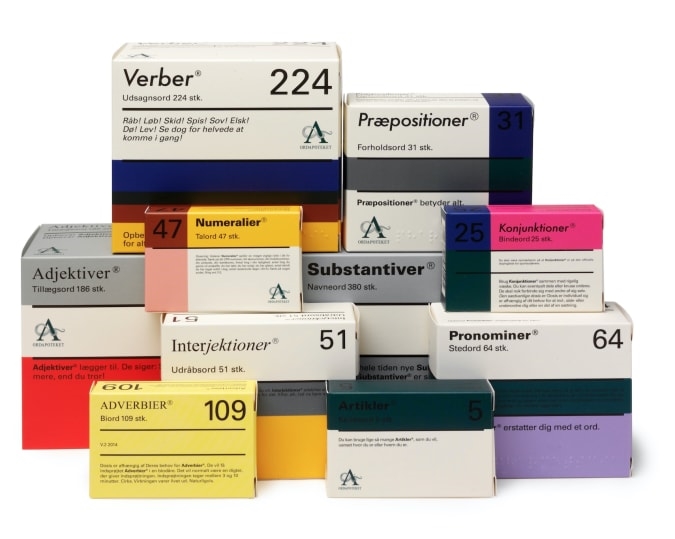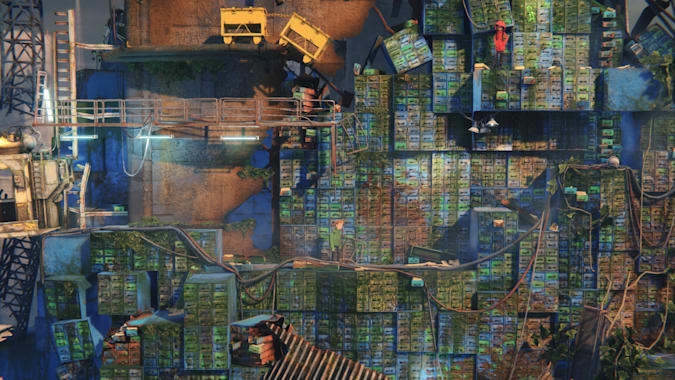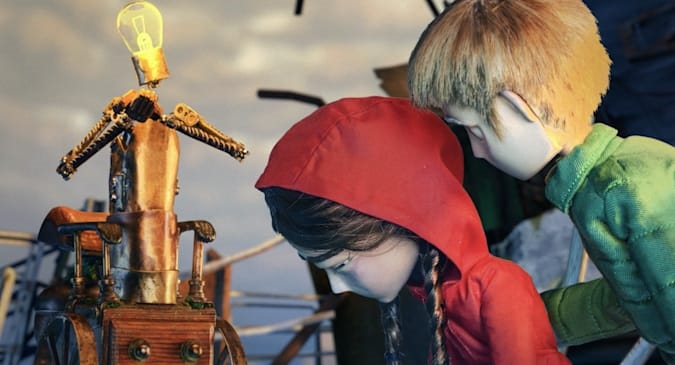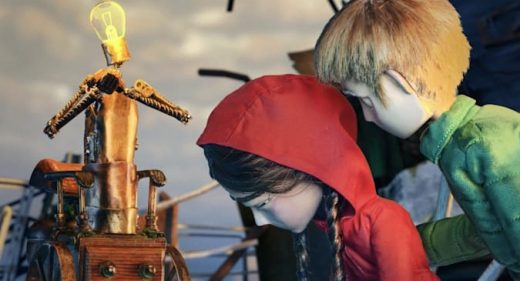‘Vokabulantis’ turns photogrammetry and stop-motion into a poetic platformer
‘Vokabulantis’ turns photogrammetry and stop-motion into a poetic platformer
It’s mesmerizing.

There’s something special about Vokabulantis. At first glance, it doesn’t look like a video game at all, with hand-built puppets clambering up deliciously detailed sets, limbs as slender and fluid as those in Coraline or The Nightmare Before Christmas. However, the environments in Vokabulantis look slightly different from classic stop-motion movies — gritty and tactile, yet static and matte. It’s hard to put into words, which is entirely perfect.
Vokabulantis is a stop-motion, co-op video game starring Karla, a young girl with long braids trailing from the hood of her red raincoat, and Kurt, a boy with a poofy green jacket and wispy, flaxen hair. Both of them are missing mouths. Where their lips should be, flat skin stretches from cheek to cheek.
It hasn’t always been this way. Just as Karla and Kurt are about to confess their true romantic feelings for each other, they find themselves mouthless and trapped in Vokabulantis, a vast and ravaged place. They’re stuck in this moment and this world, unable to verbally express themselves, until they can restore language to Vokabulantis.
The game comes from Felix the Reaper studio Kong Orange and Danish stop-motion house Wired Fly Animations. It’s been in development since 2018, and it’s approaching the end of a Kickstarter campaign that’s raised well over its goal of €70,000.
Kong Orange founder and CEO Esben Kjær Ravn has been active on the Vokabulantis Kickstarter page, regularly posting updates and answering backers’ questions, and the campaign itself is packed with information about the story, mechanics and puppet-making process. There’s one detail that Ravn left out, though.
“The third and less public pillar of the production besides Wired Fly Animations and my game development studio, Kong Orange, is the poet and artist Morten Søndergaard,” Ravn said. “He has dealt with and worked artistically with these themes for years and years.”
Søndergaard has been a staple of the Danish poetry and art scene since the 1990s, and one of his most famous installations is called Ordapoteket, or WordPharmacy. It consists of 10 boxes of medicine labeled with different parts of speech — such as verb, preposition or adjective — and containing instructions for their recommended uses. It’s a lighthearted commentary on consumption and language, and an incredibly effective image.

Vokabulantis is part visual poetry, part stop-motion film and part video game. Its strange, indescribable world is the result of a spontaneous collaboration among Søndergaard, Wired Fly and Kong Orange.
“Eventually Morten ran into Johan from Wired Fly Animations and they thought it would be a wonderful thing to make something that had more emotional impact in the traditional narrative sense, and set out to do a film,” Ravn said. “A love story between these two kids, going on an adventure in Vokabulantis. They luckily decided it should be a game at a point, because they wanted the immersion and ability to actually be inside the world…. Then they asked me to join the project. Woohoo, lucky me.”

There’s a reason Vokabulantis doesn’t look like other stop-motion projects. It’s made by hand like traditional stop-motion films, with sets created out of clay, fabric, wire and paint, but these environments are then manipulated using photogrammetry. Developers take incredibly detailed photos of the items and then import them into Unity. There, Kong Orange folks can scale the world as needed while retaining the ability to make small adjustments, a necessary aspect of building a platforming game.
Here’s how Ravn explains it:
“Normally you shoot a character on a green screen or in a set and then the animation is locked to those circumstances. We, on the other hand, can keep manipulating the sets and situating the characters in them as we want like any other platformer game would do. The difference, though, is that this is actually still stop-motion, we are not mimicking it in any way. Of course this also makes it different from traditional stop-motion, because we can scale our sets and therefore also build them at any scale we see fit. And therefore it doesn’t always look as consistently miniature-ish as a ‘real’ stop motion set would do.”
This explains the vague eeriness baked into Vokabulantis, as it straddles the worlds of traditional stop-motion and software-based animation.
“We are still working on the balance of where we want to lay the golden line in between the traditional approach and what we are doing,” Ravn said. “We are very aware that stop-motion film has created some very clear expectations in the audience or player of how this looks. We are to some extent totally messing with that, to be honest, and we need to find out if there’s limits to what people will accept.”

Clearly, plenty of people are unbothered by Kong Orange’s creative use of photogrammetry. Vokabulantis is well on its way to unlocking stretch goals before its Kickstarter campaign closes out the morning of Friday, April 16th. The game itself is due out in late 2024, Ravn said, and it’s targeting a Steam launch, at least.
The Vokabulantis crew didn’t hire a PR team to manage its Kickstarter page, and they didn’t even have a marketing budget to kick off the campaign. They simply put together a description of the game, a handful of GIFs and a mesmerizing making-of video, and went live. Apparently, Vokabulantis speaks for itself.
“Experiencing this many wonderful people joining the Kickstarter, and essentially Vokabulantis, has been above and beyond our wildest dreams,” Ravn said. “No words for it, really.”
All products recommended by Engadget are selected by our editorial team, independent of our parent company. Some of our stories include affiliate links. If you buy something through one of these links, we may earn an affiliate commission.
(45)


